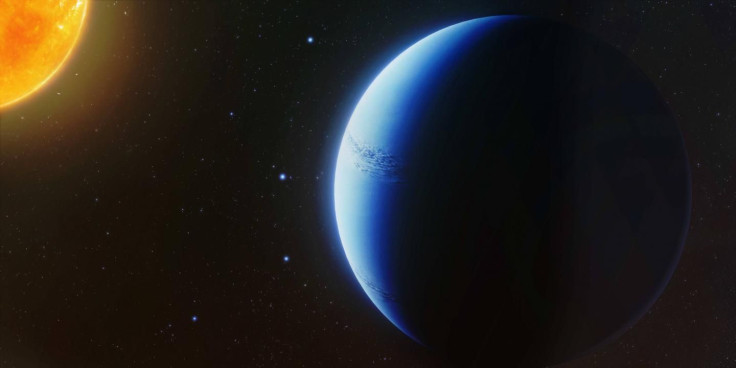WASP-96b, Weird Saturn-Like Exoplanet With No Cloud Cover

An international team of astronomers has detected a weird exoplanet, one where skies always remain clear, thanks to a cloud-free atmosphere.
WASP-96b sits some 980 light years away from Earth in constellation Phoenix and has been described as a celestial marvel because of its ability to stay devoid of cloud-cover. The feature has long been predicted in the books of science but was never observed in the cosmos until now.
The strange exoplanet is 20 percent larger than Jupiter and fits in the category of "Hot-Saturn" or planets with extremely high levels of temperature – beyond 1,000 degree Celsius – and masses similar to our own ringed-planet. This alone makes it one of the worst candidates for hosting life, but astronomers were particularly intrigued when they discovered it had no clouds at all, not even haze.
When the planet, first discovered in 2013, crossed in front of its host sun-like host star, the team, led by University of Exeter’s Nikolay Nikolov, used the Very Large Telescope in Chile and measured the change in starlight due to its atmosphere.
This allowed the group to characterize the composition of the planet’s atmosphere, which, they found, was rich in sodium – a case that could have only existed in the absence of clouds in the atmosphere.
"We've been looking at more than twenty exoplanet transit spectra," Nikolov said in a statement. "WASP-96b is the only exoplanet that appears to be entirely cloud-free and shows such a clear sodium signature, making the planet a benchmark for characterization,”
Typically, starlight passing through planetary atmospheres gets obscured by clouds, but in this case, nothing like that happened and scientists observed a clear "tent-shaped" spectra, something that proved the absence of cloud cover.
"Until now, sodium was revealed either as a very narrow peak or found to be completely missing. This is because the characteristic 'tent-shaped' profile can only be produced deep in the atmosphere of the planet and for most planet clouds appear to get in the way," the researcher added.
Clouds produce rain, block out light, and play a critical role in determining the climatic conditions prevailing on a planet. However, understanding which planet might host a thick layer of cloud and which might is not that easy due to the massive distances involved in between. This is why the group plans to the latest discovery as a base model to gain more insight planetary atmospheres.
"WASP-96b will also provide us with a unique opportunity to determine the abundances of other molecules, such as water, carbon monoxide and carbon dioxide with future observations," study co-author Ernst de Mooij said in the statement.
The study, “An absolute sodium abundance for a cloud-free 'hot Saturn' exoplanet,” was published May 7 in the journal Nature.
© Copyright IBTimes 2024. All rights reserved.





















